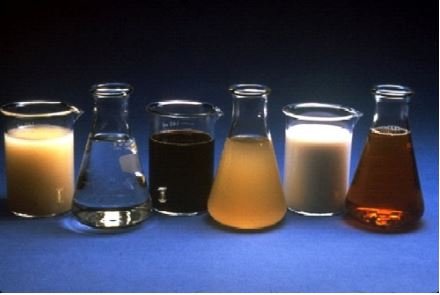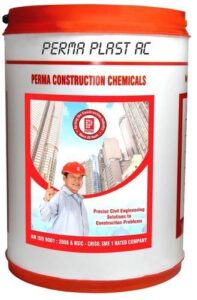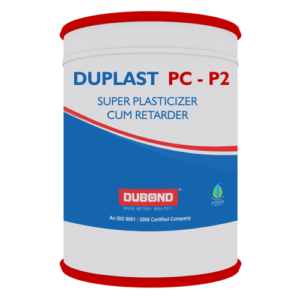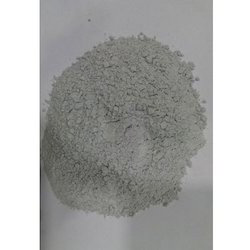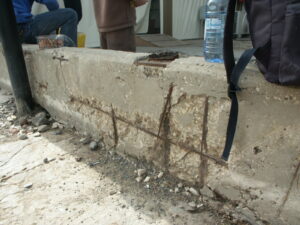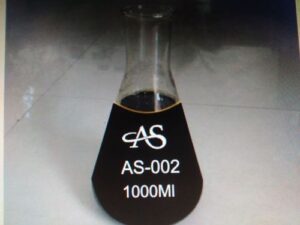Admixtures are play important role in changing properties of concrete. basically admixture added in concrete to enhancing properties of concrete . here i have discuss what is admixture its practical use and all types of admixtures used in concrete and affect after excessive use.

lets first discuss what is admixture ?
Anything that is added to the concrete except cement, sand, gravel, water, iron is called admixture.
Admixtures improve the properties of cement and concrete.
Purpose of using admixtures in concrete
(1) Increase the Strength of concrete
(2) To improve Workability of concrete
(3) Accelerate Setting of Concrete
(4) Retard Setting of Concrete
(5) Reduce Weight of concrete
(6) Improve Durability of concrete
(7) Reduce Heat of Hydration of concrete
(8) Reduce Permeability of concrete
(9) To improve bonds between concrete and steel as well as between new and old concrete work
(10) To make porous concrete
(11) To change colour of Concrete
(12) To prevent chemical attack on concrete
Types of Admixtures In Concrete
IS 9103-1999 has covered main five types of admixtures as follows
(1) Accelerating admixtures (Accelerators)
(2) Retarding admixtures (Retarders)
(3) Water reducing admixtures (Workability admixtures)
(4) Air – entraining admixtures
(5) Super -plasticizer admixtures.
The other types of admixtures are
(6) Pozzolana admixtures.
(7) Grouting admixtures.
(8) Waterproofing admixtures,
(9) Air – detraining admixtures.
(10) Bonding admixtures.
(11) Corrosion inhibiting admixtures
(12) Gas forming admixtures.
(13) Coloring admixtures
(14) Alkali – aggregate expansion inhibiting admixtures.
(15) Fungicidal, Germicidal, Insecticidal admixtures
1)Accelerators:
The purpose of adding accelerators to concrete is to speed up the setting and hardening of concrete.
Advantages of using Accelerators:
– For quick removal of form-work
– Reduction of goring time
– Early use of the structure
– Quick finishing of surfaces
– Speed of construction
– Quick repair
Main Accelerators:
– Calcium Chloride (CaCl)
– Soluble Carbonates
– Silicates
CaCl is the most widely used accelerator. Adding CaCl equal to 2% by weight of cement, initial setting time is 3 to 4 hours and final setting time is 6 to 12 hours.
At a temperature of 21 ° C, two days strength is obtained in 1 day.
If the proportion of (CaCI) exceeds 3%, flash set, drying shrinkage and creep increase.
2)Retarders:
Retarders are added to the concrete to slow down the hydration of the cement, to slow down the setting.
Retarders keep the kit in a plastic and workable condition for a long time.
Advantages of using retarders:
– To slow down the setting time
– Reduce the w / c ratio, increase the strength.
– Grouting in oil wall
– In hot regions
Main Retarders
– Calcium Sulphate (gypsum )
– Starches
– Sugars
– Cellulose Products
– Acids or Salts
Gypsum is the most widely used retarder. Usually 2 to 3% gypsum is added. Gypsum can also be used as plaster of Paris. Adding more gypsum will increase the concrete. Expansion occurs and setting is very slow.
3)Plasticizers:
Workability is an important property of concrete. The Workability of concrete varies according to the situation. High Workability is required for deep beams, thin walls, beam column junctions, pumping of concrete, trimming concreting etc.
Main plasticizers
– Calcium ligno -sulphonates
– Sodium ligno – sulphonates
– Ammonium ligno – sulphonates
The proportion of such plasticizers is 0.1 to 0.4%. At this rate the water content is reduced by 3 to 15% by keeping the workability constant.
Plasticizer’s job is to improve the workability of concrete
4) Super plasticizers :
Japan first made Super Plasticizer in 1960and then Germany in 1970. Due to the super plasticizer the water content can be reduced by 30% without reducing the workability of the cocktail. They are also called high range water reducers. It is a very powerful dispersing agent.
The advantages of Super plasticizers:
– Very high workability
– Suitable for pumpable concrete
– High strength up to 100 MP can be obtained by keeping w / c ratio as low as 0.28 without reducing Workability.
– High performance concrete can be made using fly ash, slag, silica fume etc.
– Fix concrete segregation and bleeding.
Polymers used as base for super plasticizers:
1. Sulphonated Melamine Formaldehyde Condensates (SMF)
2. Sulphonated Naphalene Formaldehyde Cor (SNF)
3. Modified Ligno – Sulphonates (MLS)
4. Acrylic Polymer (AP)
5. Poly Carboxylate ester (PC) etc.
5) Water Proofing Admixtures:
Leakage in roofs, bathrooms, toilets, walls, kitchens, water tanks, basements, etc. is still a headache for civil engineers. Numerous materials and methods are available for waterproofing in our country. But most fail for one reason or another.
The success of waterproofing depends on the quality of the material, the durability of the materials, the workmanship and the environment.
Waterproof concrete has to meet two main requirements.
(I) To be inaccessible against water intrusion
(2) Prevent water absorption.
Waterproofing admixtures are available in powder, paste or liquid form. There are two main types of materials, one is pore filling materials and the other is water repellent materials.
Pore filling materials are chemically active. It speeds up the setting time of concrete.
Examples of pore filling materials,
– Silicate of Soda
– Aluminum Sulphate
– Zinc Sulphate
– Aluminum Chloride
– Calcium Chloride
Examples of water repellent materials:
– Soda
– Potash Soaps
– Calcium Soaps
– Vegetable Oils
– Fats
– Coal tar pesidues
The following chemicals are available for waterproofing of concrete structures:
(1) Integral water proofing compounds
(2) Acrylic based polymer coatings
(3) Mineral based polymer coatings
(4) Silicon based water repellent material
(5) Waterproofing adhesives for marble, granite, tiles
(6) Joint Sealants
6) Air entraining Admixtures:
Such entraining agents produce a number of tiny air bubbles in concretethat act as ball bearings in concrete.
So as to improve the properties of the cockatiel such as workability , segregation, bleeding. Strength, durability, permeability of hard concrete also change due to air entraining agents.
its resist affect of freezing and thawing on concrete.
Air entraining agents:
– Hydrogen Peroxide
– Alkali Salts
– Vegetable Oils and fats
– Zinc Powder Natural wood resing, etc. . .
Effects of air – entrained
– As the density of concrete decreases, the permeability increases.
– Improves Workability
– Alkali – aggregate reaction
– Increases resistance against sulfate attack
– Heat of hydration reduce
7) Pozzolana admixtures:
pozzolana admixtures are that type of admixture in which natural and artificial pozzolonic material are used to improve quality of concrete
Pozzolana matierial are two types
- Natural Pozzolana → clay, shale, pumicites, volcanic ash
- Artificial Pozzolana → Fly ash, surkhi
8) Grouting admixtures:

Grouting is the process of repairing and filling crack with grouting material we use epoxy admixture as a grouting material with cement to repair cracks.
9) Air – detaining admixtures:
we already study air antraining admixture in that we study that air is forcefully added in concrete which act as ball bearing and make concrete light weight. but in air detaining admixture we basically add that special type of admixture which get contract and make concrete dense due to this is strength increase and make dense concrete.
10) Bonding admixtures:
this type of special admixture are used for bonding two surface of item like concrete , masonry and structural items.
this type of admixtures are used for make strong bond between old surface with new surface of material. they are added in concrete for increase bonding properties
11) Corrosion inhibiting admixtures:
lets first discuss how steel of concrete corrugated ?
Corrosion of reinforcement is a very complex process. Which includes chemical, electrochemical and physical processes. When reinforced steel is corrugated, iron oxide is produced which is 2 to 4 times the size of the corrugated steel.
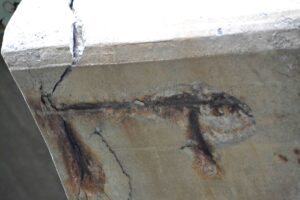 |
Corrosion of Reinforcement |
Thus in concrete, high pressure are produced around the rod. So that the concrete cracks and breaks. Secondly, corrosion reduces the cross section of the rod and also reduces its ability to withstand tensile forces.
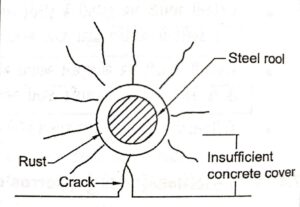 |
| Cracking due to rust |
To corrosion of the rod must first satisfied an electrochemical cell . This cell has two electrodes – anode and cathode. These two electrodes are separated by electrolytes and connected in an electric circuit.
On the surface of reinforcement steel, the part where the most oxygen is concentrated becomes the cathode and the part where the less oxygen is concentrated becomes the anode.
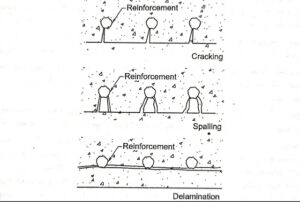 |
||
|
Concrete always has a small amount of moisture which acts as an electrolyte. Concentration of salt in water in cavities in concrete also forms electrochemical cells. The part with the highest concentration of salt becomes the anode, while the part with the least concentration of salt becomes the cathode.
This is the potential difference between anode and cathode. Which, in the presence of water and oxygen, oxidizes the steel to form iron oxide. The + charged ferrous ions near the anode move into the (Fe ++) solution while the charged free electron (e) passes through the steel and reaches the cathode.
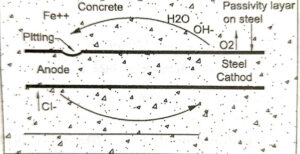 |
Corrosion mechanism and electrochemical cell |
These free electrons (e) form hydroxyl ions (OH) together with water and oxygen near the cathode. This (OH) ion combines with (Fe ++) ions to form ferrous oxide Fe (OH)2. Re-oxidation of ferrous oxide results in the formation of ferric oxide Fe (OH)3 followed by corrosion.
Corrosion inhibiting admixtures are added in concrete it will stop formation of
electrochemical cell due to this their is no formation of electrochemical cell and corrugation of steel stop
this admixture is too costly that why is used in major project. due to its high cost we generally not use that and instant of this we use coated steel.
(12) Gas forming admixtures
Chemical used for gas forming admixtures
– Aluminum powder
– Zinc
– Magnisum power
– Hydrogen peroxide
This chemical are added in concrete and they form hydrogen gas bubbles .
The amount of this chemical used is around 0.0005 to 0.002 of total weight of cement.
Its reduce settlement of concrete ingredients.
Its reduce strength of concrete when its use in excessive.
This make concrete light weight .
(13) Coloring admixtures
this type of admixture used to change colour of concrete.
following agents are used
– Chromium oxide for green colour
-Ferrous oxide for black colour
-Eed oxide for red colour
-Raw umber for brown colour
Advantage
for good aesthetic view of concrete
(14) Alkali – aggregate expansion inhibiting admixtures.
Many solid structures show deterioration due to alkaline expansion reactions. alkali aggregate reaction cause due to negative aggregate which cause crack in concrete.
Agent used for alkali – aggregate expansion inhibiting admixtures
Lithium and Barium salts can reduce the expansion and cracking associated with alkali-silica reaction
(15) Fungicidal, Germicidal, Insecticidal admixtures
Fungicidal, Germicidal, Insecticidal Admixtures. To prevent the growth of bacteria, germs, fungus on hardened concrete structures, it is recommended that the mix should have fungicidal, germicidal and insecticidal properties.
admixtures used as admixtures
Excessive use of admixtures has the following disadvantages.
1) Accelerators:
Excessive use of accelerators produces more heat of magnification and cracks in concrete.
2) Retarders :
causes of bleeding in concrete.
3) Air – entraining agents:
As the air bubbles in the concrete increase, the concrete becomes porous and gains strength.
4) Plasticizers:
The setting of plasticizers (water reducers) concrete decreases. Segregation of concrete occurs.
5) Superplasticizers:
Segregation occur in concrete.
I Hope You Like Our Article “What is Admixture ? 15 types of admixtures in concrete and Their Affects” Don’t be Cheap To Share This Article with your Friends.
+ READ MORE
- Innovation in Civil Engineering “solar roadway”
- How to solve any structural beam in smartphone within 2 minute ?
- 50+ CAUSES OF CONSTRUCTION PROJECT FAILURE
- How bricks are made – materials,manufacturing of bricks,moulding of bricks,burning of brick
- Classification of Aggregates Used In Construction Work || Civil Engineer Must Know ||

